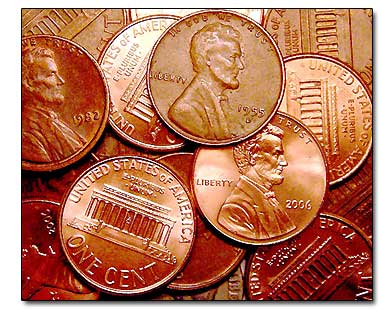Wednesday, July 27, 2011
Thursday, July 21, 2011
EEM’s offered based on 5% of Median home prices or appraisal/sales price:
Several lenders have finally allowed the cost of improvements to exceed the $8,000 limit. The maximum amount of financed energy efficiency improvements using an EEM is now based on 5% of the median home price for the area. This housing article by C.A.R. shows a chart of the median home values. However, H.U.D. established their median values in their on-line loan approval platform called FHA Connection. At Go Green Lending we have found the FHA Connection data to be significantly greater than the reported numbers published in the C.A.R. report. In L.A. County we are eligible up to $22,000 in cost effective improvements or %5 of the appraisal value, whichever is lower. SEE THE REPORT
Wednesday, July 20, 2011
Tuesday, July 19, 2011
THE BRITISH ARE COMING - To Insulate America
Since 80+% of British residences have had some level of energy retrofit British companies offering energy efficiency improvements have decided that America is worth a re-visit. According to an article in the NY Times British companies such are Mark Group have established offices in various cities in the US such as Philadelphia. Given that Congress is still debating the proof of climate change (supported by partisan politics and significant lobbyist funds) British firms want to take advantage of the hit-and-miss US energy policies and grab as much of the $5 trillion (that's 't' as in too bad America) business opportunity as they can. Mark Group is already insulating homes in the Philadelphia area with plans for rapid expansion. Liberty Hall may be the Brits next target. Heck, with $5 Trillion they could buy Philadelphia and reduce our national debt.
Monday, July 18, 2011
Increase the Quality & Quantity of Business Referrals with Social Media Prospecting™
Dan Fowler Speaks! Social Media Prospecting™ Basic ClassJuly 21, 2011 @ 10:00AM, Webster University in Irvine
The Social Media Prospecting™ (SMP) Basic Class has been designed to demystify the misconceptions surrounding the entire Social Media universe. The class is built on an interactive lecture platform READ MORE
Reserve your spot today! For $20 off your admission...enter discount code: GOGREENLENDING
Saturday, July 16, 2011
SOLAR GROWTH IN 2010 - CA LEADS
'In calendar year 2010, approximately 880 megawatts (MW)1 of grid-connected solar photovoltaic (PV) energy systems were installed in the U.S. (of which approximately 30% were residential), up from 435 MW installed in 2009, yielding a cumulative total of 2,100 MW (SEIA & GTM, 2011). California has been and continues to be the country’s largest market for PV, with nearly 1000 MW of cumulative capacity. California is also approaching 100,000 individual PV systems installed, more than 90% of which are residential.'
Friday, July 15, 2011
Green Products Buyers Really Want
According to American Institute of Architects Home Design Trends Survey: “Energy efficiency is not on the wish list for home buyers in 2011-it is on the “must” list, “ writes Paul Cardis, CEO of Madison, Wis.-based AVID Ratings, which conducts research on home design preferences. Which eco-friendly amenities are grabbing buyer’s attention?
· High-efficiency insulation
· High-efficiency windows
· Double and triple glazed windows
· Tankless water heaters
· Water-conserving devices
· Products aimed at improving indoor air quality
· Renewable flooring products, such as bamboo and cork
Thursday, July 14, 2011
SENIOR DISCOUNTS - COST EFFECTIVE LIVING
10,000 plus Baby Boomers reach retirement age each day now that this population bulge from the post WWII years has aged. This means a serious reduction in income across all social-economic strata. Smaller incomes (have you ever looked at social security benefits? Good luck with that.) means a higher percentage of income spent on Utilities. Which are not going down in the golden years, no matter where you live.
Solution: seniors or near seniors can make - here it comes - Cost Effective improvements to their homes to reduce their long-term financial burden while living in a more comfortable home - regardless of social status or home structure.
Look into Cost Effective Home Improvements.
Thursday, July 7, 2011
1776 APPLIED TO 2011
Benjamin Franklin really was not thinking about our utility bills in 2011 when he coined the phrase, "A Penny saved is a penny earned." We have heard that phrase so many time we overlook the basic concept it offers: cost effective. If you do not waste a penny on unnecessary or trivial expenses then you don't have to exert the effort to generate a penny and the taxes needed to keep the whole penny.
An Energy Efficient Mortgage requires the improvements made in the family home cost less than the energy saved or to apply Franklin's concept - cost effective. The improvements must save the family money over the life of the improvement-- or why bother. So the formula becomes: I < Es (Improvement costs less than Energy saved).
Making 'cost efficient' improvements to a home saves fuel energy and makes the house more comfortable. But it also saves the human energy required to keep paying the rising utility bills and the taxes needed to keep the earning.
Cost effective: a powerful little idea. Thanks Mr. Franklin
Wednesday, July 6, 2011
Tuesday, July 5, 2011
C.A.R. releases Q1 2011 Housing Affordability Index
Low interest rates, home prices contribute to higher affordability throughout California, C.A.R. reports. LOS ANGELES (May 12) – Housing affordability continued to improve throughout the state in the first quarter of 2011, led by low interest rates and home prices, the CALIFORNIA ASSOCIATION OF REALTORS® (C.A.R.) reported today. The percentage of buyers who could afford to purchase a median-priced, single-family home in California rose to 53 percent in the first quarter of 2011, up from 50 percent in fourth-quarter 2010 and 50 percent in first- quarter 2010, according to C.A.R.’s Traditional Housing Affordability Index (HAI). C.A.R.’s HAI measures the percentage of all households that can afford to purchase the median-priced, single-family home in California. READ More…
Subscribe to:
Comments (Atom)


